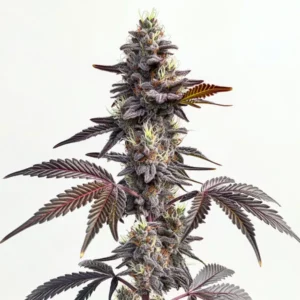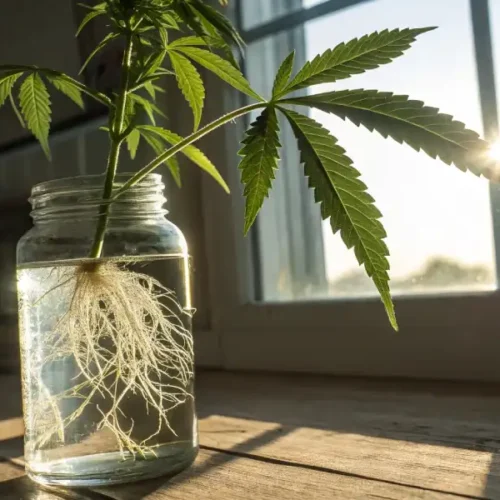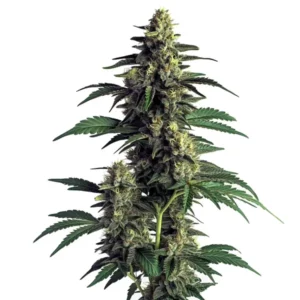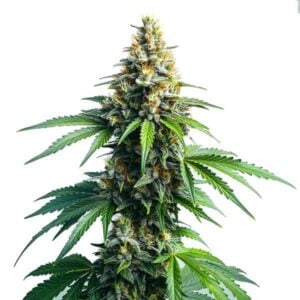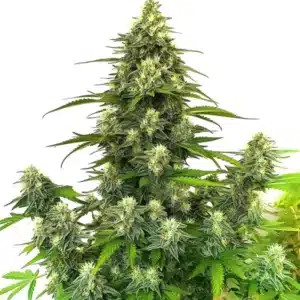Growing cannabis in humid climates presents unique challenges and opportunities. While the moisture can promote lush, vigorous growth, it can also lead to problems like mold and mildew if not managed properly. For those cultivating weed that grows in humid conditions, selecting the right strains and employing effective growing techniques are critical to success.
Best Cannabis Strains for Humid Climates
When it comes to choosing the best strains for high humidity, strain selection is vital. Some cannabis varieties are naturally more resistant to the issues that come with humid climates, such as mold and mildew. Below, we’ll explore how to choose these strains and highlight some of the top choices for both indica and sativa lovers.
Choosing the Right Weed That Grows in Humid Climates
Selecting the right strains for humid climates starts with knowing which genetic traits are most beneficial in these conditions. Cannabis strains that naturally resist mold and mildew are the best candidates for weed that grows in humid environments. These strains typically have denser foliage that allows airflow or produce smaller, less compact buds that dry more easily.
Additionally, strains that originated from tropical or subtropical regions tend to have built-in resistance to humidity-related issues. These strains have evolved in moist conditions and are naturally better equipped to handle the challenges of high humidity.
Top Indica Strains for Growing Weed in Humid Environments
Indica strains are typically known for their relaxing effects, but they also offer some practical advantages for growers in humid climates. Strains like Northern Lights and Afghan Kush are particularly well-suited for these conditions. These strains have dense foliage that allows for better airflow and smaller buds that are less prone to mold.
Northern Lights is a classic choice for growers who need weed that grows in humid conditions. This strain is renowned for its hardiness and resistance to mold, making it ideal for those who want to avoid the pitfalls of high humidity. Similarly, Afghan Kush is another strong contender, offering resilience against moisture-related issues while producing a rich, relaxing high.
Sativa Strains That Thrive in Humid Conditions
For those who prefer the uplifting effects of sativa strains, there are several options that perform well in humid environments. Durban Poison and Maui Waui are two sativa strains that have adapted to humid climates, thanks to their origins in tropical regions.
Durban Poison is particularly known for its resilience in moist conditions, making it a top choice for those looking for weed that grows in humid areas. This strain’s open bud structure allows for better airflow, reducing the risk of mold. Maui Waui, originating from Hawaii, is another excellent option. It thrives in tropical, humid environments and offers a fruity, energizing high that’s perfect for daytime use.
Promos & Deals
How Humidity Affects Weed Growth
Knowing how humidity impacts weed growth is important for anyone cultivating in a moist environment. High humidity can be both a blessing and a curse, promoting vigorous growth but also creating ideal conditions for mold and mildew. Knowing how to navigate these challenges is essential for a successful harvest of weed that grows in humid climates.
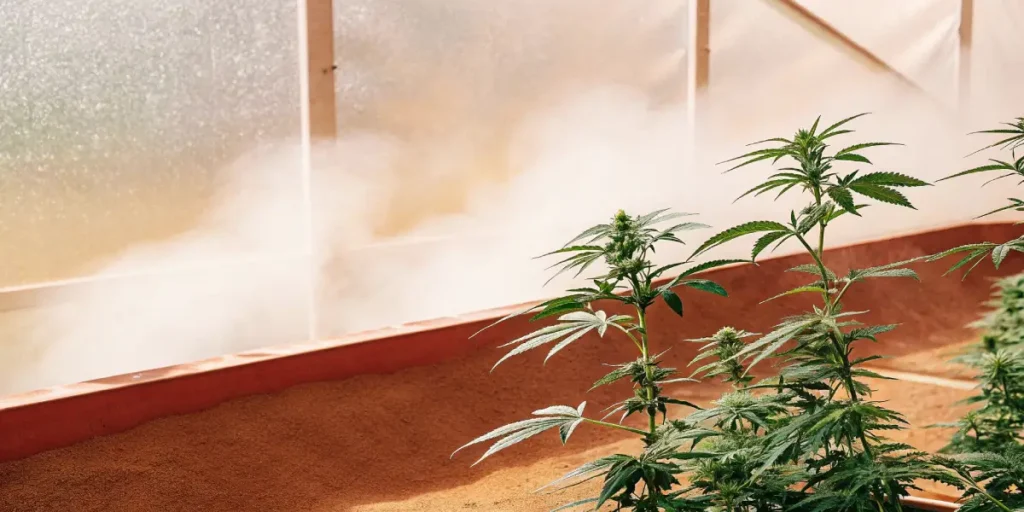
Knowing the Impact of High Humidity on Weed That Grows in Humid Climates
High humidity affects weed that grows in humid climates in several ways. On the positive side, moisture in the air can promote robust vegetative growth, helping plants develop thick, healthy foliage. However, too much humidity, especially during the flowering stage, can lead to significant problems.
Excess moisture can cause the buds to retain too much water, making them more susceptible to mold and mildew. This is particularly problematic for dense, compact buds that don’t dry out quickly. Moreover, high humidity can also stress the plants, leading to slower growth and lower yields.
Challenges of Growing Weed in Humid Climates
Growing weed that thrives in humid conditions requires careful management to avoid the most common issues. Mold and mildew are the biggest threats, often appearing as a result of prolonged exposure to moisture. Powdery mildew and bud rot can quickly devastate a crop if not addressed early.
Additionally, pests such as spider mites and aphids thrive in humid conditions, further complicating the growing process. These pests can weaken plants, making them more vulnerable to diseases. Managing these challenges involves not only selecting the right strains but also implementing proper growing techniques.
How to Prevent Mold and Mildew in Weed That Grows in Humid Conditions
Preventing mold and mildew in weed that grows in humid climates starts with maintaining proper airflow and ventilation in your grow space. Ensuring that your plants are not too densely packed and that air circulates freely around them is key. Using oscillating fans and ensuring good spacing between plants can help reduce the risk of mold.
Another effective strategy is to monitor and control the humidity levels in your grow environment. Using a dehumidifier during the flowering stage can help keep moisture levels in check, reducing the likelihood of mold developing on your buds. Additionally, it’s important to prune any excess foliage that could trap moisture and create breeding grounds for mold.
Growing Techniques for Success with Weed in Humid Climates
Cultivating weed that grows in humid climates requires a combination of the right strains, proper environmental control, and effective growing techniques. By realizing how to manage humidity and optimize your grow space, you can mitigate the risks associated with high moisture levels and ensure a healthy, productive harvest.
Best Practices for Controlling Humidity Levels
Controlling humidity is one of the most critical aspects of growing cannabis in moist environments. High humidity, especially during the flowering stage, can lead to mold, mildew, and other problems that can ruin your crop. To keep your humidity levels in check, it’s essential to monitor the environment consistently and make adjustments as needed.
One effective method for controlling humidity is using dehumidifiers, particularly during the flowering phase when the plants are most vulnerable. Dehumidifiers help to reduce excess moisture in the air, lowering the risk of mold and mildew development. Additionally, air conditioning can be employed to manage temperature and humidity simultaneously, providing a more controlled growing environment for weed that grows in humid conditions.
Beyond mechanical solutions, you can also manage humidity levels by adjusting watering schedules. Overwatering is a common issue in humid climates, as the moisture takes longer to evaporate. By watering less frequently or using well-draining soil, you can reduce the amount of moisture that remains in the air around your plants.
Selecting the Right Soil and Nutrients
Choosing the right soil and nutrients is another important factor in growing weed that thrives in humid climates. In moist environments, it’s vital to use soil that drains well to prevent water from accumulating and increasing humidity levels around the roots. A mix that includes perlite, coco coir, or sand can help improve drainage and reduce the likelihood of root rot.
Nutrient management is equally important. Humid conditions can sometimes lead to nutrient imbalances, as the soil remains wet for longer periods. It’s essential to use fertilizers that are specifically designed for well-draining soils, as these will ensure that your plants receive the nutrients they need without the risk of nutrient lockout. Additionally, using organic fertilizers can help improve soil structure, further enhancing drainage and reducing moisture retention.
Another useful technique is to incorporate beneficial microbes into your soil. These microbes can help improve soil health and plant resilience, making your cannabis plants better equipped to handle the challenges of high humidity. Products like mycorrhizae and other beneficial fungi can enhance root development and nutrient uptake, leading to stronger, more robust weed that grows in humid conditions.
Effective Ventilation and Airflow Strategies
Proper ventilation and airflow are key to preventing the buildup of humidity in your grow space. Stagnant air can lead to pockets of moisture where mold and mildew can thrive, so it’s essential to keep the air moving around your plants.
Using oscillating fans is one of the simplest and most effective ways to improve airflow. These fans help distribute air evenly throughout the grow space, preventing moisture from settling on the plants. For larger grow operations, consider using inline fans connected to ducting systems, which can help exchange stale air with fresh air from outside the grow room.
In outdoor growing scenarios, positioning your plants in a location that receives a gentle breeze can help naturally reduce humidity levels. If you’re growing in a greenhouse, it’s important to ensure that the structure is well-ventilated. Installing roof vents, sidewall vents, and exhaust fans can significantly improve airflow and keep humidity levels in check.
Additionally, it’s important to avoid overcrowding your plants. Overcrowded grow spaces can trap moisture between the plants, creating an ideal environment for mold to develop. By giving each plant enough space, you allow for better airflow, reducing the risk of moisture-related issues in weed that grows in humid climates.
Tips for Harvesting and Curing Weed in Humid Conditions
Even after you’ve successfully grown your cannabis plants in a humid environment, the challenges don’t end there. Harvesting and curing your buds properly is essential to preserving their quality and preventing mold and mildew from ruining your hard work.
When to Harvest Weed That Grows in Humid Climates
Timing is everything when it comes to harvesting weed that grows in humid climates. It’s essential to harvest your plants at the right time to avoid exposing them to unnecessary moisture during the final stages of growth. In humid environments, it’s often better to harvest slightly earlier rather than risk the buds becoming overripe and more susceptible to mold.
To determine the best time to harvest, monitor the trichomes on your buds. Trichomes should be milky white with some amber coloration, indicating peak potency. Harvesting at this stage ensures that you capture the cannabinoids at their highest concentration, while also minimizing the risk of mold developing on overly ripe buds.
In extremely humid conditions, it might also be necessary to stagger your harvest. By harvesting your plants in stages, you can reduce the amount of plant material that needs to be dried at any one time, making it easier to control humidity levels during the drying process.

Proper Drying Techniques to Prevent Mold
Drying your cannabis properly is important to preserving its potency and flavor, especially in humid climates where mold can be a serious concern. The drying process removes moisture from the buds, preventing mold from developing during storage.
In humid environments, it’s essential to dry your cannabis in a controlled environment. Consider using a dehumidifier in your drying space to keep the humidity levels between 45-55%. This range is ideal for slowly drying the buds without causing them to become too dry or retaining too much moisture.
Another important factor is temperature control. Keep the temperature in your drying room around 60-70°F (15-21°C) to ensure a slow, even drying process. Rapid drying can cause the buds to lose flavor and potency, while slow drying reduces the risk of mold by allowing moisture to evaporate gradually.
It’s also important to ensure proper air circulation during the drying process. Hang the buds in a well-ventilated space with plenty of airflow. However, avoid pointing fans directly at the buds, as this can cause them to dry too quickly. Instead, use oscillating fans to gently move the air around the drying space, ensuring your weed that grows in humid conditions remains mold-free.
Curing Methods to Maintain Quality in Weed That Grows in Humid Climates
Curing is the final step in the cannabis cultivation process, and it’s especially important for weed that grows in humid climates. Proper curing allows the buds to develop their full flavor and potency while ensuring that they remain free from mold.
After drying, place your buds in airtight glass jars for curing. Open the jars daily for the first week to allow any remaining moisture to escape a process known as “burping.” In humid climates, it’s essential to monitor the humidity inside the jars closely. Using a hygrometer can help you keep track of the humidity levels, which should be maintained between 60-65% during the curing process.
If you notice the humidity inside the jars creeping up, burp the jars more frequently or leave them open for longer periods. If necessary, you can also use desiccant packs or specialized humidity control packs to absorb excess moisture and maintain the optimal curing environment.
Curing your cannabis for at least two weeks, and preferably longer, will result in smoother, more flavorful buds. Proper curing not only enhances the taste and potency of your weed that grows in humid conditions but also ensures that it can be stored for extended periods without degrading or developing mold.
FAQs About Weed That Grows in Humid Areas
Can All Strains Be Grown in Humid Climates?
Not all cannabis strains are suited for humid climates. Strains that have dense, compact buds are more prone to mold and mildew and may struggle in high humidity. However, many strains are specifically bred for moisture resistance and can thrive in these conditions. It’s important to choose weed that grows in humid climates, focusing on strains with open bud structures and those that have been historically grown in tropical regions, as they are more likely to succeed in humid environments.
What Are the Signs of Humidity-Related Stress in Weed That Grows in Humid Climates?
Humidity-related stress in cannabis plants can manifest in several ways. Common signs include wilting, yellowing leaves, and slow growth. Mold and mildew are also clear indicators that your weed that grows in humid conditions is suffering from too much humidity. If you notice these symptoms, it’s important to take immediate action by improving airflow, reducing watering, and controlling humidity levels in your grow space.
How Can I Improve Yield in Weed That Grows in Humid Conditions?
Improving yield in humid climates involves selecting the right strains, controlling environmental factors, and employing proper cultivation techniques. Focus on choosing weed that grows in humid conditions, which is resistant to mold and mildew. Ensure your growing environment has adequate ventilation and humidity control. Regular pruning and training techniques can also help improve airflow and light penetration, leading to healthier plants and higher yields.

